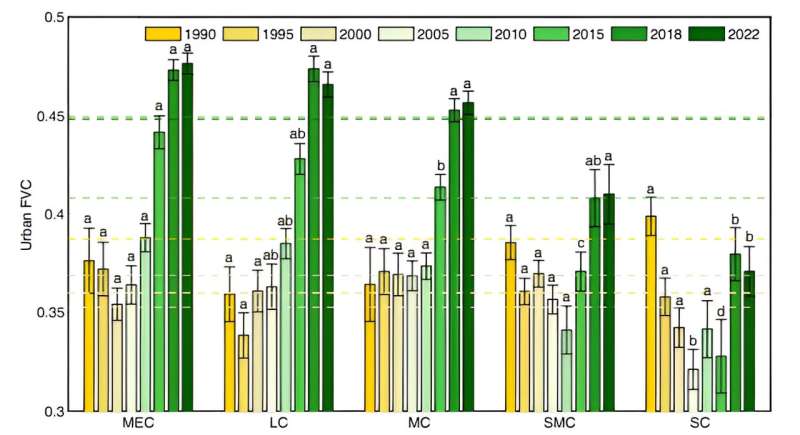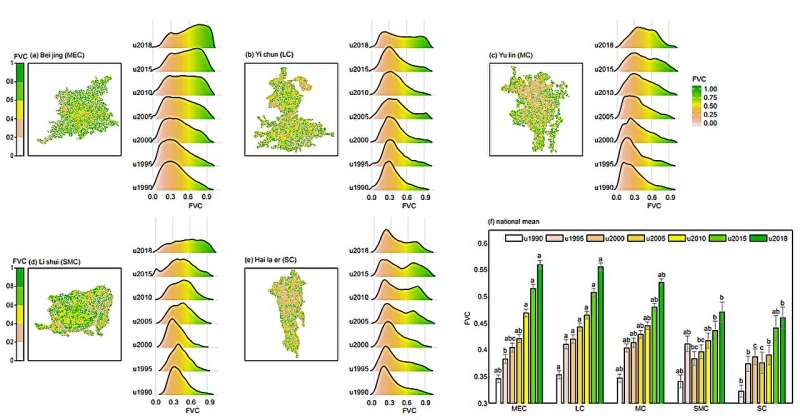This article has been reviewed according to Science X's editorial process and policies. Editors have highlighted the following attributes while ensuring the content's credibility:
fact-checked
trusted source
proofread
Uncovering the green miracle of urbanization

Between 1990 and 2005, the national average urban fractional vegetation cover (FVC) decreased from 0.38 to 0.35 due to the increase in floor area ratio and impervious surface in urban areas. The decline is particularly pronounced in megacities, small, medium and small cities.
However, since 2005, this trend has significantly reversed, and all cities in the country have shown an increasing trend of FVC, with an average increase of 27.31%. Especially in megacities, the increase of FVC is particularly significant, which is closely related to the expansion of urban scale and the implementation of ecological construction policies.
Change characteristics of FVC in new and old urban areas. The FVC of new urban areas is generally higher than that of old urban areas, and this phenomenon is particularly obvious in megacities and large cities. This shows that in the process of urban expansion, the planning and construction of new urban areas pay more attention to ecological balance, while the old urban areas are facing the pressure of reducing the green area.
Using case studies of Beijing, Yichun, Yulin, Lishui, and Hailaer, the researchers show the changing trend of FVC from the old urban areas to the new urban areas. The data of these cities show that over time, the FVC of new urban areas gradually shifts to high FVC, a trend that is common in cities of different sizes, although the degree of migration to high FVC decreases with the decrease of city size.

The study also found that the average vegetation coverage of all cities in China was positively correlated with urban GDP (R=0.86), temperature (R=0.81), wind speed (R=0.68) and urban construction land area (R=0.70), but negatively correlated with urban precipitation (R=-0.24).
For large and medium-sized cities, the top three factors affecting FVC are GDP, urban population, and temperature. However, for cities in arid/semi-arid regions, FVC changes are more sensitive to climatic factors (such as precipitation), indicating that the influence of climatic conditions on urban greening in these regions cannot be ignored.
This study shows the spatial and temporal evolution of urban greening in China and also reveals the compound effects of economic development, population growth, climate change, and policy orientation on urban vegetation coverage. This is of great significance for guiding future urban planning and promoting urban greening and ecological construction.
With the deepening of the urbanization process, how to balance urban development and ecological protection to achieve green and sustainable development will become an important issue for city managers and planners.
The paper is published in the journal Science China Earth Sciences.
More information: Fei Feng et al, Variability of urban fractional vegetation cover and its driving factors in 328 cities in China, Science China Earth Sciences (2024). DOI: 10.1007/s11430-022-1219-2
Provided by Science China Press




















